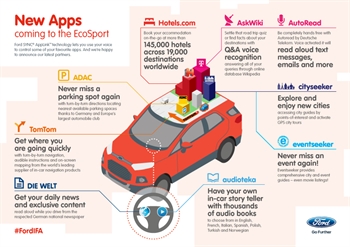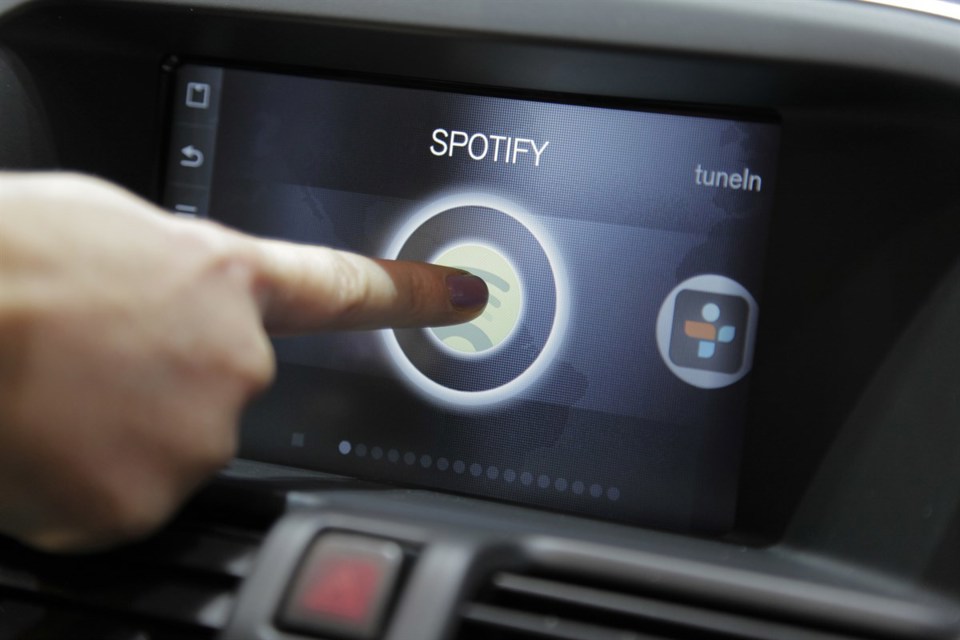By Debbie Kirlew
Intelligent systems already enable drivers to keep in touch with the outside world. Developments include voice-activated controls that enable texting at the wheel, vehicles that can ‘talk’ to each other to warn of traffic problems on the road ahead and driverless convoys.
The increasingly sophisticated technology means motorists are potentially more likely to remain in the franchised dealer network when it comes to servicing and repairs, due to the level of expertise and knowledge demanded by the products.
NEED TO KNOW |
|
|
♦ Dealers must learn to better communicate the benefits of hi-tech extras, such as software upgrades |
|
| ♦ Always-on technology to connect cars to a dealership’s diagnostics exists and dealers are willing to use it | |
“The days of cars being mechanical devices is history; they are sophisticated IT systems on wheels,” said David Phatak, marketing manager of Ford’s customer service department. However, he also delivered a word of warning: “The aftermarket is very clever and they will always develop systems to enable them to repair cars on the road.
“But, as franchised dealers, we will always be the vanguard and have the ability to immediately service and repair the most modern vehicles.”
Ford and its 650-strong dealer network, like many other manufacturers, chooses to bundle its technology checks and upgrades into its overall aftersales seasonal checks and service offerings rather than piggy-back the technology to initiate specific communication. Ford BlueService has been introduced to deliver much more than ‘just a routine service’ and includes electronic information system checks, providing necessary software upgrades as part of the package.
Phatak added: “What we don’t do is shout about the extras. As far as the customer is concerned, the work is invisible. The software upgrades can mean improvements in emissions and fuel economy or an upgrade to the electronic operating system which, for example, means the latest handset can be used – the car may have been manufactured before the iPhone 5 existed.
“We need to demonstrate much more effectively that
the vehicle receives more than just the service in the franchised network.”
Neil Holborn, dealer principal at Ford dealership Dees of Wimbledon, part of Cambria Automobiles, believes the sophisticated technology does encourage retention. The dealership splits its handover to fully explain the car’s features, which also helps cement the relationship with each customer, and they have found most are keen to return and learn more.
“It can take around two hours to go through the part-exchange and all the documents, so when it comes to handing over the car, people’s attention can start to wane; all they want to do is sit behind the wheel and drive off,“ said Holborn.
“When they come back, we provide more detail on the car’s features and they will quite often purchase additional items such as accessories or a service plan.”
Automatic upgrades
Separating individual hi-tech items for specific customer communications isn’t something Holborn has tried and his view echoed Phatak’s: “For us, software upgrades are routine. They form part of the health check and, if required, we automatically update, but we do need to be more pro-active in telling the customer about the checks and upgrades we undertake.”
 As former group product and service director for high street independent Kwik Fit, David McNamara, now managing director of aftersales at Ford Retail, brings a very different perspective to the group, having experienced first-hand the developments the independent aftermarket achieves on the back of manufacturer advances.
As former group product and service director for high street independent Kwik Fit, David McNamara, now managing director of aftersales at Ford Retail, brings a very different perspective to the group, having experienced first-hand the developments the independent aftermarket achieves on the back of manufacturer advances.
“Education is the key and that starts with the handover,” he said. “It’s best to do it in bite-size chunks – we give the customer the basics and let them experience the car before they return for a more in-depth explanation of its features. It’s then that the relationship develops between the customer and the business.”
As far as McNamara is concerned, education is not just for the customer but for staff, particularly the service advisers.
As well as face-to-face, educating the customer can come via other communication methods. Marketing Delivery’s portfolio of solutions emphasises that email-driven campaigns and messages, such as service reminders, also provide the opportunity to make reference to software upgrades and other technology checks.
Marketing Delivery managing director Jeremy Evans said: “We tend to opt for lifestyle messages, such as a summer check before the annual drive to Cornwall, which provides the opportunity to communicate with customers and invite them back into the dealership. Many of those checks and upgrades are automatically undertaken but we don’t tell the customer and that’s a shame.”
He added: “The car can self-diagnose but it is not until it is in the workshop and on a ramp that the technician knows what work is required.” Imagine, then, if the car could communicate directly with the dealership to highlight an issue that requires workshop attention.
At the Frankfurt Motor Show, Ford unveiled its latest technological advances for its vehicles and referred to a ‘new era of connected driving’.
Ford SYNC is the manufacturer’s in-car connectivity system. SYNC with AppLink will soon enable drivers in Europe to voice-control smartphone apps, including those from companies such as TomTom navigation and room-booking service Hotels.com. The new Ford EcoSport SUV will be among the first to incorporate the new feature.
Smartphone apps
With all this technology, it seems almost last-century that the car itself does not communicate with the dealership when it needs a service, brake pads changed, its oil levels checked or the DPF light comes on.
Evans said: “In theory, the ability for the car to communicate with the diagnostics in the dealership is possible.”
Phatak agreed: “In time, my prediction is that the car will be able to move beyond diagnosis and be able to communicate with the customer’s smartphone and the dealership. The technology is with us already.”
McNamara said the technology and the willingness to use it, at least from dealers and manufacturers, exists.
“It seems logical that the technology will be taken to the next step whereby the car’s diagnosis is communicated both to the customer and the dealership, which allows us to be proactive. For example, if a DPF light comes on, some customers may not realise taking preventative action can save them money in the long run, as ignoring it could cause irreparable damage. I don’t think it will be very long before such technology is operating in vehicles. Fleet operatives would welcome such technology because they will be able to proactively manage repairs rather than relying on the drivers and this will have an impact on long-term repair costs,” he added.
“The retail customer is another question, although we are much more used to receiving notifications via our smartphones and we even welcome proactive participation in our everyday lives.”
McNamara said he believes the acceptance of such technology will be down to dealers communicating the benefits from the first handover, to the service advisers when the car returns for a service, as well as via dealer marketing material and events. In fact, McNamara predicted the comeback of the oil check and tyre-changing evenings of old, although the subject matter will be advanced technology and maximising its potential, as well as highlighting the potential damage if a warning light is ignored.
The vehicle-to-dealership communication scenario opens up an immense number of possibilities, as well as potentially strengthening the bond between customer and franchised dealer. Whether customers are prepared to accept that level of interaction and intervention is another matter.
















CGH - 17/10/2013 16:54
"......sophisticated IT system on wheels" eh? Essential for OAP's or the school run. It makes you wonder how we've managed up to now.